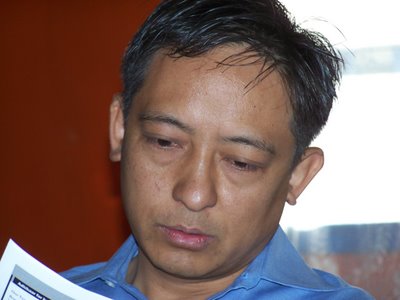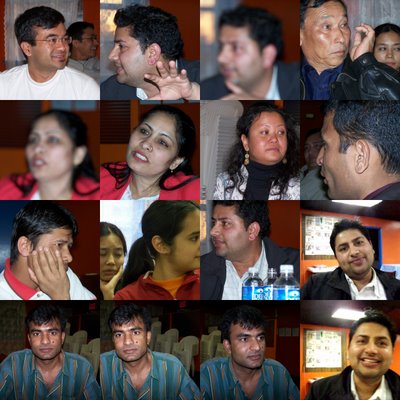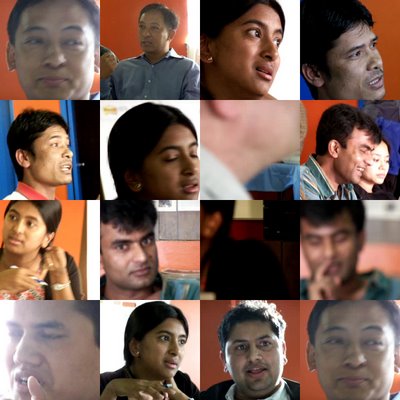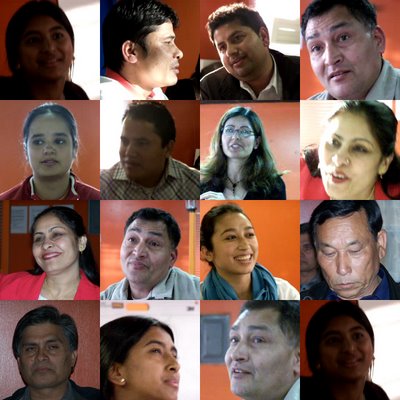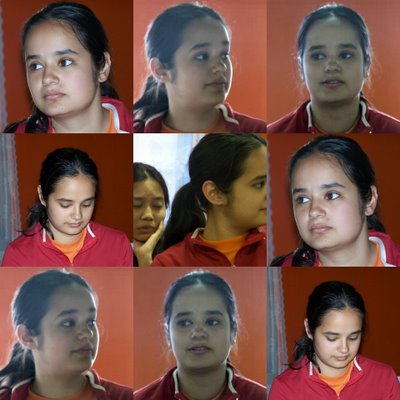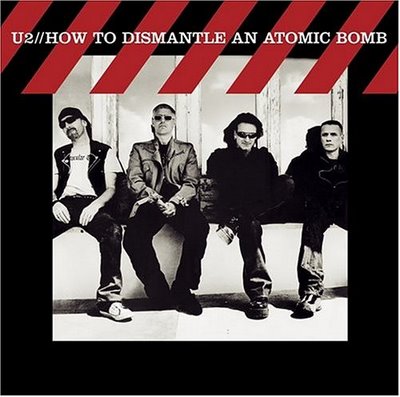
Would you do it? How would you do it? Is it desirable? Is it worth it? Is it possible?
Is it desirable? I think yes. To dismantle the two armies before going into the constituent assembly elections would be a great way to ensure free and fair elections to the assembly. A population that has suffered from both for a decade will still feel a cloud of fear as it goes into the polling booths with the two armies standing. According to the 12 point agreement, the two armies will still be standing when we go for the assembly elections. I think that can prove problematic. And we can not afford to not have free and fair elections to the constituent assembly, now that we have it: the parliament voted for it unanimously.
The army as a social institution has been as archaic as the monarchy. Both symbolize feudal mindsets. Dismantling it is as appealing as the idea of a republic. How else could the country get a fresh start?
Nepal is a poor country. It needs to be spending on education, health and micro credit, not on defense.
How Would You Do ItThe idea would not be to render 60,000 RNA soldiers - or however many there are - jobless. The same applies to the 12,00o Maoist soldiers, or however many there are. The idea would be to offer them all a smooth transition into the private sector.
That would require money. Where would that money come from? There are several sources. If you were to sell the arms and ammunitions the two armies have, that will generate a pot of money. The RNA has a huge fund which is money the RNA has made through its peacekeeping operations to do with the UN. And the Maoists are the richest political party in Nepal: they are going to have to cough up some money. But the biggest chunk will come from the foreign powers, namely India, China, America, Europe and others. If they have sunk tens of millions of dollars into military aid to prevent the worst case scenario, I am sure they will pump in tens of millions of dollars for peace. Because Cambodia will not happen in Nepal.
What will you do with that money? The idea is not to offer job guarantees to these soldiers in the two armies. The idea is to make their transition from the army into the private sector rather smooth. It will be like offering them an early retirement. You would perhaps give them each a year's worth of salary. And you would create a fund that will give them low interest loans if some of them want to start businesses. Or you would give them super low interest loans if they might want to go to school, college, vocational school, job training. As to how much they would get would be determined by a formula that takes into account as to how much they are making now. The top salaried people would get proportionately more.
Likely noone will get devastated economically. They will likely stay in similar income brackets. It will not feel like their lives got disrupted. It will feel like a career change.
GI Bill of Rights - Wikipedia, the free encyclopediaThe GI Bill was designed for American soldiers returning home from World War II. There was no way all of them or even many of them could have stayed on in the army. And the education they received is a big reason for the amazing economic boom America saw over the next few decades.
Will It Be DoneI don't know. It depends on many things. Most of all it depends on how gutsy the seven party alliance leadership can be, how imaginative. This is a bold vision.
I think it should be done, and I sure am pushing for it.
Double Digit GrowthI think dismantling the two armies is key to being able to imagine rapid economic growth for Nepal once it becomes a federal republic.
Ending 238 Years of Civil War in Nepal
Dr Brian Cobb, May 2
After years of things going from bad to worse, Nepal is recovering. Democracy is back on track and a permanent truce seems possible. A long and painful decade of conflict has killed 13,000 people officially, but in reality far more. The official figure includes only those shot or blasted to death but far more people, not enumerated, have died from disruption of health care, water and food supplies and other more subtle and indirect but surely numerically greater causes. Many more have been physically handicapped, psychologically harmed, impoverished, bereaved or orphaned.
Most analysts date the beginning of the violence to 1996, but this is erroneous. The overt violence—that due to bullets and bombs—started then, but structural violence has been endemic to Nepali society. Structural violence is harm due to poverty, discrimination, lack of access to education and healthcare and other forms of injury due to inequality. Consider the disparities in life expectancy, maternal and child mortality and other health indices between the rural low-caste citizens and the urban high castes. It is clear that the death, disability and suffering caused by structural violence far exceeds that due to overt violence.
There is a nexus between the two. It was the frustration turning to rage at the savage inequalities of Nepali life that fueled the Maoist insurrection. What the Maoist leaders actually did was to merely transform structural into overt violence, as a lighted match transforms the chemical energy of petrol into thermal energy. A similar transformation occurred in mid-April of this year; the pent-up frustrations of life under chronic war and military dictatorship were ignited by the heavy handed police response at Gongabu into a national revolution that has sidelined the monarchy and its brutal stooges.
National security, a concern in any state, evolves into an obsession in a totalitarian regime. Lacking popular support and aware of the dangers, autocrats rely on violence or its threat to maintain their power. The Shah and Rana dynasties depended on it. But this very violence, both structural and overt, leads to a level of popular discontent that boils over and cannot be contained by force. Therefore, the only way to maintain stability is to eliminate all forms of violence, both structural and overt, and govern based on the consent and support of the citizenry.
This means addressing poverty, unemployment, discrimination, lack of educational and health care services, lack of infrastructure and other root causes of conflict. One teacher or doctor or road building engineer provides more stability than a hundred sadistic soldiers or predatory police. Well governed countries do not experience civil wars or revolutions.
The Royal Nepal Army does not and cannot protect the people. Should India or China attack, it would be of no use whatsoever. It is a breeding ground for human rights abuses, corruption, nepotism, coups d’etat and colossal waste. It tempts leaders into thinking they can repress and control the people rather than meeting their needs. It diverts the meager resources of a poor country from investment in health, education and infrastructure to consumption by unused weapons and idle soldiers.
The answer lies in rational use of public funds. The RNA should be immediately placed under competent command by UN or retired Gurkha officers with a bilateral ceasefire to function as a peacekeeping force and to voluntarily disarm the Maoists, after which it should be combined with Maoist cadres and put to work attacking the structural violence that has undermined Nepalese democracy from its origins. Its personnel, trucks, helicopters and other resources can take on the work of healing, educating and reconstructing the nation. A portion of its light weapons and equipment can be transferred to the police, who should be screened, trained and monitored to prevent further corruption and rights abuses. Remaining weapons can be sold off. Nepal needs an army like it needs a navy.
But there is another, far more sinister form of violence in Nepal. It lurks, literally, underground. There are 10,000 RNA planted mines and an unknown number of Maoist planted devices. Hundreds of people per year are being killed or maimed by these horrific, indiscriminate weapons. They will continue their vile work for decades; they recognize no truce, nor do they distinguish between civilian and combatant. Landmine violence, like other violence, falls disproportionately on the most vulnerable. Farmers, children and the poor suffer and die. Even domestic animals, so important to the rural poor, are at risk.
The landmine problem must be addressed in five ways: 1, landmine awareness education for villagers, including children; 2, danger zone fencing and signage; 3, healthcare provider education in basic trauma management and creation of a trauma care system; 4, immediate signing, ratification and RNA and Maoist compliance with the 1997 UN landmines treaty; and 5, mine removal by qualified international teams with assistance of the RNA and Maoists to locate them.
Nepalis are warm, gentle and peace-loving people. The land of the Buddha must become a zone of peace, prosperity, justice and progress. All forms of violence must be eliminated. Is someone who traffics young girls to India to become infected with HIV any morally different from someone who shoots them with a rifle? In fact, which fate is crueler? Is the government that perpetuates the kind of poverty and desperation that leads to trafficking any different from the one that bombs the village? Is the parliament that spends money on guns or personal luxuries instead of health posts, thus causing death and suffering, any different from the one that orders those guns to be used? Is the official who diverts precious development funds for his own use any better than the commander at Belbari?
This is not the kind of hair-splitting casuistry debated in academic philosophy departments. These are literally life and death issues. Only by recognizing and extirpating violence root, stem and fruit can stability be achieved. This is why millions of brave Nepalis risked life, limb and liberty to bring about change. They didn’t do it to put certain parties or leaders back in Singh Durbar; they did it because they want a better life for themselves and their children. Sweeping away the monarchy alone will by no means end violence or feudalism. The whole zero-sum, exploitative and corrupt mentality must be replaced by true democracy, equality and progress. Only then will the andolan have accomplished its aim: true and lasting peace.
King of Nepal bowed before peoples' power By Michael Van De Veer Asian Tribune - Bangkok,Thailand
IS NEPAL’S ORANGE REVOLUTION SQUEEZING KING INTO EXILE ? Kathmandu, Nepal
April 30, 2006
The struggle to create a Democratic Republic in Nepal has surprised the world.
People’s Power and largely peaceful nationwide demonstrations have laid the basis for Nepal to break the chains of a 208-year-old Monarchy.
Many compare the recent peoples’ victory to the “Peoples’ Power revolution” in 1968 when the authoritarian regime of Ferdinand Marcos was brought to an end in the Philippines, or the successful nonviolent “Orange Revolution”in the Ukraine in 2004.
In Kathmandu a 19-day general-strike left piles of rotting garbage lining the streets and there were serious water and food shortages, as well as LP-cooking-gas, kerosine, aircraft-fuel and medicine shortages. Each day the peaceful pro-democracy demonstrations grew, and each day they were met with increased Police and Army brutality. People from every level of society, even children, were brutalized, shot with live and rubber bullets and in at least 14 cases, killed by Security Forces.
At around 5:00 p.m. last Monday the 24th of April, as an estimated 2-million Pro-Democracy demonstrators were encamped around Ring Road which encircles the Capital, the enraged Crown Prince Paras piloted the Royal helicopter around Kathmandu Valley to survey the massive crowd.
As reported by a Nepali Weekly, Jana Astha, at around 6pm.the Crown Prince stormed into the Palace and along with other Royal relatives demanded the “king hang on to power and incited the Security forces to shoot at demonstrators.”
The embattled King, faced with a bloodbath, addressed the Nation at 11:30 p.m.(April 24) on local TV and radio. In a few words the King relinquished absolute power and reinstated the parliament which had laid dormant for four years.
It reportedly “took the King to nearly midnight to pacify his enraged son and send him back to his residence.”
Within hours the 7-Party Alliance (SPA) chose the ailing Congress Party leader, 84 year old G.P. Koirala, as the Prime Minister-designate.
On Friday, April 29th in the dusty parliament building at Singhadubar, the historic Parliament meeting was convened at 5:30 by Deputy Speaker Chetra Lakha Yadav. Her militant voice filled the chamber and the message from PM-Designate G.P. Koirala was met with thunderous applause.
For the 1st. Time in history there was no Crown in the Gallery Batithak and Royal-Power was replaced with People’s Power. Even with senior political leaders assuring that the Parliament is committed to the 12-Point Plan Agreement and Constituent Assembly elections, and tens-of-thousands of demonstrators demanding an end to Autocracy, the establishment of a Republic, the parliament adjourned without voting on these important matters.
A Constituent Assembly not only represents political jurisdictions but caste, class, oppressed minorities, unions, civil society groups, women and other under represented groups. In 1786 after the French Revolution, the first Constituent Assembly was formed to draft a constitution. This form of drafting a constitution was followed in 1918 when, during the October-revolution, the Russians adopted a draft-constitution. In 1946 a Constituent Assembly met in New Delhi to draft a constitution for an India. It took 165 days to complete this historical task.
It is clear that anti-monarchy sentiment is seething and that if the Maoists are brought into the government, the King, the Crown Prince and the Royal Family who no longer enjoy the support of the government or the Nepali people will either remain in Nepal as ordinary citizens or have to seek asylum and exile.
D. Michael Van De Veer-Freelance Journalist-in Kathmandu
Contributor to UnitedWeBlog-Voice of Democratic Nepal, &
Pacifica’s Free Speech Radio News.
Member: SAJA (South Asian Journalist Association).
Host OUT OF THE BOX KKCR-FM www.kkcr.org
PO Box 21218, Thamel, Kathmandu, Nepal
